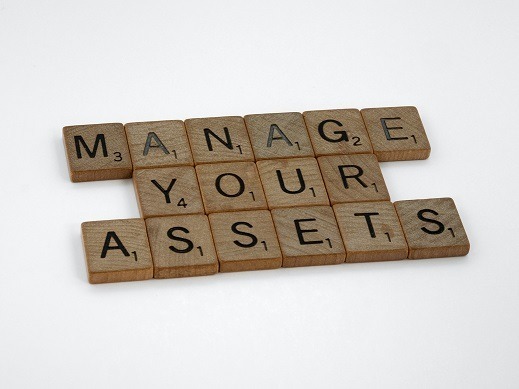
Investing in real estate to build wealth is a popular move. And because we all need to live somewhere, buying a house can be a doubly good decision. Our home offers shelter on our terms and becomes a store of equity when property values rise.
Granted, buying doesn’t make sense for everyone. But for those who do buy, what’s the optimal percentage for real estate as part of their overall wealth?
Conventional Wisdom: 25 – 40 %. Your Mileage May Vary.
The real estate tech company UpNestTM reports that the usual advice is to hold between 25 and 40 percent of personal wealth in real estate. The recommendation is based on the wealth-producing traits of real property: appreciation, equity, and, potentially, rental income.
Some homeowners set aside part of their homes as rental units. In-law cottages, basements with separate entrances, or spaces that appeal to short-term guests can transform a home with high maintenance costs into source of income. Some people own multiple homes or investment real estate portfolios. Some real estate investors, at times, carry half or more of their wealth in real estate equity. Avid real estate investors consider their property a source of continual income.
No matter how real estate is used, it’s best when it balances out a person’s other investment choices. And it can be a durable investment, lasting through generations.
On the other side of the question are those who feel comfortable with no more than 25% tied up in their homes. While a primary residence can appreciate in value, they observe, there are significant costs in selling it. Thus, a homeowner needs to have sufficient funds and investments that can be easily withdrawn, so as not to become house-rich and cash-poor. The more wealth a person ties up in a home, the fewer dollars available to invest or spend in other ways.
And what’s good for the boomer is not necessarily good for the millennial! Older people and those with high incomes often have (and want) smaller percentages of their wealth in their homes, and more in other investments and the savings they’ve built up over the years.
Here’s a Rationale for Holding 25 – 40% of Wealth in Real Estate.
The median US home price is about $270,000. The median net worth of U.S. homeowners is around $255,000, according to the Federal Reserve’s most recent survey. So, is the typical home actually more than 100% of the typical homeowner’s wealth?
Not exactly. Most U.S. homes have mortgages on them. So, to bring this down to most people’s reality, let’s just count what the typical real estate owner has that’s not under a mortgage lien.
As a new buyer, the value you hold in your home is your down payment, so it’s typically $54,000 — just 20% of a home priced at $270,000.
As the homeowner’s journey continues, monthly mortgage payments gradually shift the home’s value out from under the lien. The end goal of the mortgage is a full payoff. At that point, a homeowner who hasn’t built up other investments has likely missed many opportunities for wealth-building. And this is why you could say carrying a mortgage — as long as its interest rate is reasonably low — is a good idea. When some people speak of a mortgage as “good debt,” this is how they’re thinking.
Some homeowners prefer to be free of mortgage liens. In some states, an early mortgage payoff enables homeowners to increase their homestead exemptions, shielding more home equity from judicial orders for creditors.
Living mortgage-free means having more home equity, whereas living with a mortgage can mean having more ready cash. What’s best? The answer depends on a homeowner’s situation. But all things considered, the conventional financial advice tends to support the holding of diverse investments, not tying up disproportionate wealth in a home. This is the rationale for the common advice to homeowners: that they try to hold 25 to 40 percent of their overall wealth in their real estate.
Important note: Remember that carrying costs cut into your real estate assets. What are carrying costs? The property taxes. Homeowner’s insurance. Homeowner or neighborhood association fees, if applicable. Renovations, maintenance and ground care. Plus the mortgage and its interest. Investors need to budget for all carrying costs.
Buckets of Crypto: A High-Risk Approach?

Conventional wisdom doesn’t account for cryptocurrency and blockchain tokens. Crypto assets make up a relatively new asset class. Yet already, 16% of the U.S. adult population has bought them. Digital assets are especially important to the younger generations of homeowners. Thirty-one percent of U.S. adults under 30 have bought cryptocurrency, says a recent survey from Pew Research. No current discussion of wealth allocation of U.S. homeowners is complete without at least a mention of how digital wealth fits in.
Cryptocurrency can be used in purchases — even real estate purchases. Yet it’s typically held as a store of value, a means of staking value for rewards, or an investment. Like a house, digital assets stand apart from stocks and bonds. For some homeowners, they become part of an overall wealth balancing act.
In addition to keeping some cash accessible from regular income, these investors might place their wealth, for example, in three major buckets. In other words, they could hold wealth in three investment categories — for example, by keeping one third of their wealth in real estate, a second third of their wealth in stocks through a 401K or an individual retirement account, and the remaining third of their wealth in cryptocurrency.
Risky, right? Yes. There’s risk in all investments. In a way, it’s a game of scissors-paper-rock. Bitcoin isn’t subject to inflation, but dollars are. Dollars are unlikely to drop in value very suddenly, but bitcoin could. Home values are relatively predictable, compared with more volatile investments. Homes can’t be moved from place to place, whereas bitcoin can be sent and received internationally. The uses, risks, and potential rewards with various assets are wide-ranging. Plus, each asset class exists within a market that could perform well or not in the months and years ahead.
This is the reason for a basic rule of investing: diversification. Should one asset class falter, it’s helpful to have other sources of sustenance.
It’s Your Call. Real Estate Is Unique, and a Home Is More Than Financial
Every household blends its financial goals with personal lifestyle factors. Every homeowner has a unique set of expenses, income sources, wealth-building timelines, and retirement goals. And there’s no precise formula. There will be surprises now and then, no matter how carefully a homeowner plans the allocation of assets. A buyer with a desirable property in a suddenly hot market might have a major increase in the real estate portion of wealth, especially after a few years rising of property values. The reverse is true, too. Trends and hot markets can change.
Neither this blog nor any other can predict the future or dispense personal financial advice. The ideas and information offered here are intended for general education only. Whether you agree or disagree with the strategies described above, we hope they inspire energetic thought and conversation.
Supporting References
UpNest.com: How Real Estate Wealth Compares Across Generations (Sep. 23, 2021).
The United States Federal Reserve: Survey of Consumer Finances (released Sep. 2020).
Andrew Perrin for PewResearch.org: Fact Tank: 16% of Americans Say They Have Ever Invested In, Traded or Used Cryptocurrency (Nov. 11, 2021).
Dave Lee for Dave Lee on Investing: Bitcoin and Tesla – Making Money Through Disruption (Episode. 445; Nov. 9, 2021).
Jessica Mathews for Fortune.com: How Crypto Can Fit Into Your Overall Portfolio (Oct. 21, 2021).
And as linked.
Photo credits: RODNAE Productions and Brett Jordan, via Pexels.
